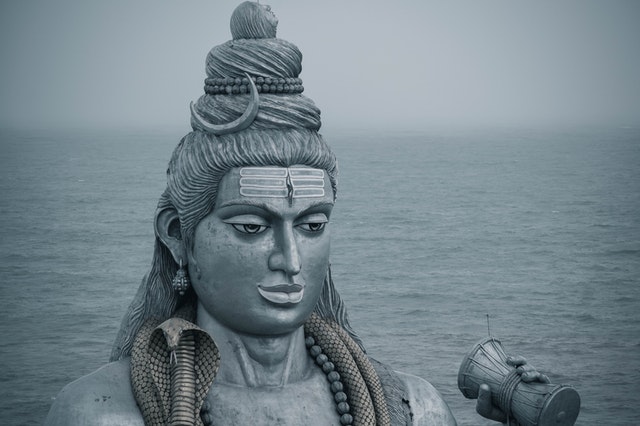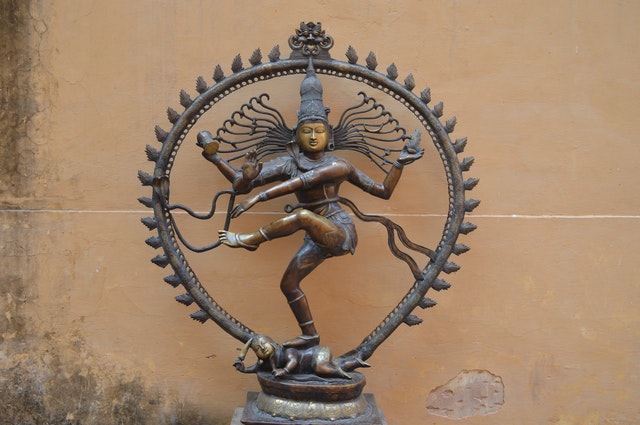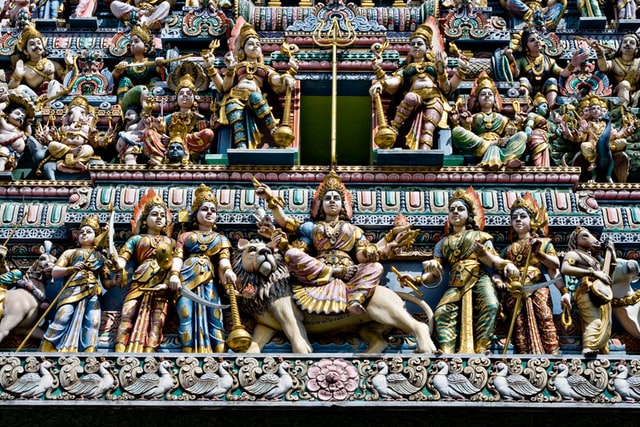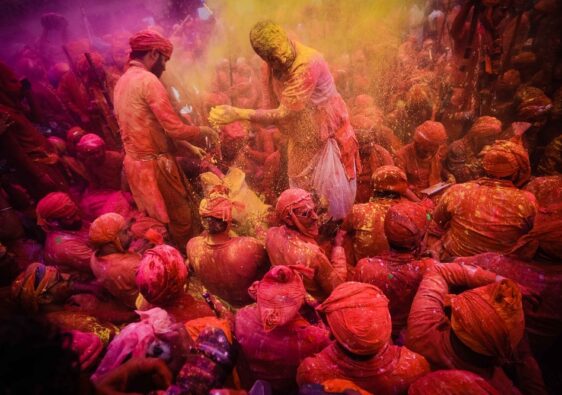Maha Shivaratri, or the “Great Night of Shiva”, is a Hindu festival celebrated annually in reverence of Lord Shiva. It is one of the most important festivals in India and Nepal, and is celebrated by Hindus all over the world. The festival is marked by fasting, prayers, and meditation on Lord Shiva. Maha Shivaratri also celebrates the marriage of Lord Shiva and Parvati.
As the auspicious occasion has arrived and is just round the corner, today we discuss about the mystical significance, mythological tale behind it and that Why We Celebrate Maha Shivratri.
Table of Contents
What is Maha Shivaratri?

Maha Shivratri or the Great Night of Shiva is an important as well as a celebrated festival for the Hindus and takes place annually in honor of the God of Destruction, Shiva.
As per the Hindu significance, a Shivratri occurs just before the full moon day every month of the year to dedicate a day towards the holy deity Shiva.
A Maha Shivratri is the most celebrated and regarded as a religious as well as a spiritual festival across India and around because as per the astro-study goes, this day is when a human body experiences a natural upsurge of energy. It is believed that on this day any human being would be at their spiritual peak.
Hindus consider this upsurge of energy, positive vibes and the feeling of spiritual upliftment as being closer to God as one could possibly be in their human form. Thus, the celebration.
Why we celebrate Maha Shivaratri?

What fascinates me the most about Hindu festivals or just any festival in general is to learn the backstory, the history and the mythological tale behind it – the why of it all.
When it comes to the festivals dedicated to our deities, our Gods – the tales have alternatives. There’s never just one story for which the festival would be celebrated. As for this particular holy fest, let’s learn what the tales tell us about why we celebrate Maha Shivratri –
1. The Battle of the Most Superior God
The legend goes that once while travelling around the universe, Lord Brahma reached to the Abode of Lord Vishnu and saw him resting on Shesh-Nag while being surrounded by Garuda and other attendants.
Lord Vishnu saw Brahma but did not get up to greet him which enraged Brahma and thus a verbal battle between the two gods commenced to determine who is superior.
Soon a battle between the two major Hindu deities started and continued for a long time. Seeing this, the other deities arrived from heaven and began to get worried since there was no sign of the battle coming to an end. They decided to call in the third member of the Holy Trinity, Lord Shiva.

As the other deities came for help, Lord Shiva sent his hundred Ganas to pacify both of them, but it was of no use since the battle did not stop even then. After this, Lord Shiva decided that he shall himself go and try to stop the war.
When Shiva reached the location, Lord Brahma and Lord Vishnu were about to fire their respective weapons, Brahmastra and Narayanastra towards each other. Fearing the destruction that would be caused if the weapons were fired, Lord Shiva manifested himself into an infinite pillar of fire or Analstamba and stood between the two lords.
The pillar was so enormous in size that it reached high above the skies and penetrated deeper down the Earth. This didn’t stop the war, but it turned more like a race to find the end of the pillar between the two. “Whoever finds the end of the pillar, will be declared as the true Superior Lord“.
Lord Brahma transformed into a Swan and flew above the skies to find the end of the burning pillar, while Lord Vishnu turned himself into a Boar and dug deeper into the earth to find the other end of the pillar.
Lord Vishnu went towards the Patal or the Underworld, but wasn’t able to find the end of the everlasting pillar. On his way above, Brahma met a Ketaki flower which advised the Lord of Creation to give up looking for the pillar’s end since it seems infinite.
The Ketaki flower became the false witness to Brahma’s deceit as he claimed he found the end of the pillar. Lord Vishnu did not argue and told him that he couldn’t find the deeper end of the pillar and hence accepts defeat.
Witnessing this deception happen before his eyes, Lord Shiva emerged from the pillar and got enraged with Lord Brahma and the flower for lying in front of everyone. Shiva was pleased with Lord Vishnu due to his honesty and accorded him with the same status as his own.
Thus, this is why we celebrate maha shivratri on this day as the day when the universe accepted Lord Shiva to be the most superior and infinite God of all and Lord of All Lords (Devo Ke Dev, Mahadev).
2. Samudra Manthan
Samudra Manthan or the Churning of the Ocean was another significant event in the Hindu Mythology and forms another major reason as to Why We Celebrate Maha Shivratri.

As per legend, the story started when there were talks about a form of Amrit or the nectar of immortality existing inside the ocean somewhere on Earth.
The demons as well as the lords from heaven were excited on the news and wanted to look for it. The demons wanted it for their own gain while the Gods wanted to secure it and keep it away from the hands of the evil creatures.
Both the sides started to pull through the ocean from different sides but it didn’t give out any form of nectar – just garbage.
So both parties, the demons and the gods decided to churn the ocean together and when they finally get the nectar, they’ll share it. Somehow they agreed to it and thus started the Samudra Manthan.
With the entire energy of the two species from different worlds came together to churn the ocean, it started to produce many forms of jewels, gems and finally – the nectar could be seen inside it.
But due to the continuous churning, the ocean started to produce the most poisonous venom seen – Halahal. Both sides started to get injured and many even did not make it alive.
That is when Lord Shiva was contacted and asked to stop the Halahal to spread out and destroy the Earth. There were not many ways to stop the spread of the poison so Lord Shiva drank the entire poison filled ocean and kept it inside his throat – so he won’t die.
The poison in his throat is also said to be the reason behind why Shiva is depicted in a blue shade.
3. Anniversary of Lord Shiva and Goddess Parvati
While the other two are major mythological tales from the Shiva Purana, the most revered and followed reason as to why we celebrate maha shivratri is this one – the marriage celebration of Lord Shiva and Goddess Parvati.
It is simply believed than on this day – the embodiment of mindfulness (Shiva) and the embodiment of nature (Parvati) tied the knot and as the consciousness and the energy emerged together to form what we call today – creation!

As per the legend goes the marriage of Lord Shiva and Goddess Parvati was an interesting tale of its own.
Parvati, the daughter of Meena and Himavat, was a Princess and daughter of the Himalayas. While Shiva was and is an Adiyogi.
It is said that during the wedding, while everyone dressed in their royal attires – the bride, the family and the guests, Lord Shiva came quite dressed up in his own style – dreadlocked hair, covered with ash from head to toe, dripping with blood. When Meena first saw the groom – she fainted. And to be honest, who wouldn’t at the horrifying site.
Parvati went to Shiva and told him to change into a different attire for the sake of her mother’s health and the family’s dignity. Shiva immediately changed his attire into a royal one and looked beautiful. When everyone saw Shiva in this look, all they could say was “that is the most beautiful man to ever be born”.
The wedding of Lord Shiva and Goddess Parvati is not just a celebration of a special day, it is a celebration of life itself, of creation, of everything beyond life and death. That is why we celebrate Maha Shivratri.
How is Maha Shivaratri celebrated?
There are many elements which make it to the celebration of this particular festival. Now that we know why we celebrate maha shivratri, let’s find out the HOW factor. Unlike other Hindu festivals, this one is more on the spiritual level rather than a celebration in the outer world.

These are the major elements of a Maha Shivratri celebration –
Fasting
One of the most essential element of celebrating the auspicious day and understanding why we celebrate Maha Shivratri is the fasting. People tend to fast all day long and eat only after bathing on the next day. The fast is seen as a test of one’s own determination and ability.
Holy Puja
The timing of the Puja (or worship) might differ in different regions but the ceremonial worship remains the same. We stand or sit together worshipping Lord Shiva and Mata Parvati. There’s a few bhajans and keertans included in it. Some people might even organize a full fledged Aarti and invite relatives and friends to indulge in the holy task.
Full Night Meditation
Many people literally celebrate the great night of Lord Shiva and pull an all nighter while meditating and sitting at an upright position while folding their legs and chanting Om Namah Shivaya.
Interesting Fact #1 – The “Na” “Ma” “Shi” “Va” “Ya” depicts the five elements of the universe namely, “Earth”, “Water”, “Fire”, “Air” and “Ether”, respectively.
Significance of Maha Shivaratri
Maha Shivratri is not just a festival or function which we celebrate every year during this time. It is something beyond. It is the awakening of our consciousness, it is about connecting to our God, it is about meditation and feeling that extreme level of energy inside us and it is about studying our own self.
The marriage of Shiva to Parvati is a depiction of the confluence of consciousness and energy and that is what makes life. Maha Shivratri signifies creation, life, energy, conscience and an experience of oneself like never before.

It makes you find yourself within you.
Maha Shivratri can represent different significance for different people and different paths. For example, for a person heading to the spiritual path it would be of spiritual significance – of feeling one with their God. On the other hand, people who care about families and relationships more they consider this day to be a celebration of the Holy Wedding.
Maha Shivratri means different things and has different significance to different people and what’s the best part about it is that it’s completely fine! No one judges you for what sense you celebrate it for. It’s a festival of you – however you wanna experience it.
Conclusion
Now that we talked about the mythologies behind it, the significance of it, the way of celebrating and that why we celebrate Maha Shivaratri, we can get excited about the upcoming festival. Tell me in the comments if you liked this informational blog post and share it with people who might be interested to know about this special day of the year.
Happy Maha Shivratri to Everyone!
That’s All Folks!





Great blog and interesting stories behind Maha Shivratri celebration…. keep it up Har Har Mahadev🙏🙏
Har Har Mahadev 😇
Living in a typical hindu society where we were told from our childhood to do fasting and we follow Just without knowing any reason. Glad that i came across this article. Beautifully narrated. 🌼🌼
That’s the purpose. Glad you liked it.